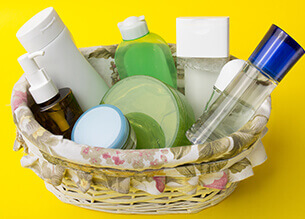
The skincare market is filled with miracle creams that promise to eliminate wrinkles, fade discoloration, and bring out beautiful youthful skin. With the myriad of choices, how do you know what is effective and which products to buy?
The first step in evaluating a skincare product is to look at the list of ingredients. Is the list so long and filled with so many exotic and miscellaneous ingredients that you feel overwhelmed? All skincare products have a baseline number of ingredients (eg. purified water, glycerin, petrolatum, alcohols, propylene glycol) that makes the product skin appropriate with a standard shelf life. However, skincare products with too many added colors, fragrances, miscellaneous, preservatives, and exotic “extracts” may also serve as a potential source of irritation especially in people with sensitive skin. You may also look for products that are labeled as hypoallergenic.
There are certain active ingredients that are considered helpful and have a scientific basis for its use. Retinol is a vitamin A derivative (retinoid) that is commonly added to over-the–counter skin products (eyecreams, facial moisturizers) for antiaging purposes. Members of the retinoid family have the ability to help even out mild discoloration and induce collagen formation. Prescription versions are also available and commonly used for its cosmetic benefit. Vitamin C is another active ingredient used in many skincare formulations, often as a serum, to help even out skin discoloration and as an antioxidant to protect the skin against environmental skin damage. Niacinamide based products can help reduce redness of the skin. Salicylic and Glycolic acid based products exfoliate the dead surface skin cells. This is just a partial listing of more conventional active ingredients found in skin products.
Lastly, always inspect the expiration date of all of your skincare products. Almost all skincare products have a defined shelf-life because active ingredients do expire. Sunscreen is a classic example of a product in which expiration dates are critical to heed. Most products have an expiration date of one to two years, and this information is usually imprinted on the end of the tube or on the bottom of the jar.
